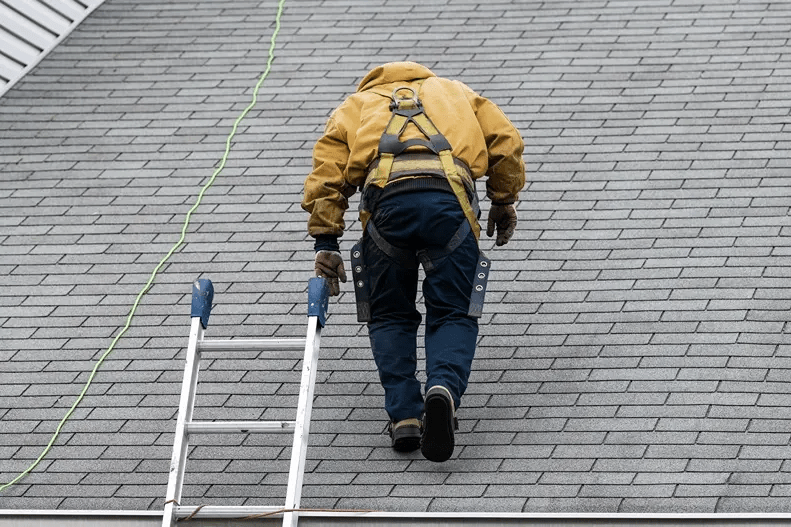How Often You Should Get a Hail Damage Roof Inspection to Evaluate Storm-Related Damage
How Often You Should Get a Hail Damage Roof Inspection to Evaluate Storm-Related Damage
Blog Article
The Important Guide to Roof Evaluation: Guarding Your Home Against Typical Damage
Routine roofing system examinations are an essential part of home upkeep that can avoid minor concerns from escalating into significant problems. As we explore the typical signs of roofing system damage and reliable upkeep approaches, it ends up being obvious that an aggressive approach is necessary for guarding your investment.
Relevance of Regular Roof Covering Examinations
Routine roofing examinations are vital for preserving the integrity of a building's structure. These inspections act as a positive procedure to identify prospective issues before they rise into pricey fixings or substantial damage. By carrying out regular assessments, residential or commercial property proprietors can make sure that their roofings stay in ideal problem, therefore prolonging their lifespan.
Throughout these assessments, numerous variables are assessed, including the condition of roof shingles, blinking, and drain systems. Furthermore, the existence of moss, debris, or algae can be identified, permitting prompt removal. Attending to minor problems early on can prevent a lot more substantial problems, such as leakages or architectural degeneration, which might endanger the safety of the building.
Additionally, regular roofing evaluations add to energy efficiency. A well-maintained roof covering lessens heat loss during colder months and minimizes the strain on home heating and cooling down systems. This, subsequently, can bring about lower utility bills and a reduced carbon footprint.
Common Indicators of Roof Covering Damage
Identifying common indicators of roof covering damages is necessary for homeowners to keep the security and long life of their residential or commercial property. Among the most obvious indicators is the presence of missing, fractured, or crinkled roof shingles. These conditions can compromise the roofing's integrity, resulting in leaks and further degeneration. Additionally, granule loss, often visible in rain gutters or on the ground, signals that tiles are maturing and shedding their protective capacities.
One more essential indication is water stains on ceilings or wall surfaces inside the home, which frequently indicate leaks originating from the roofing. House owners need to likewise examine for mold or mildew growth, as these can prosper in wet problems brought on by roofing leakages.
Blinking around chimneys and vents should be checked for corrosion or damage, as malfunctioning blinking can enable water to penetrate the roofing system structure. Drooping areas on the roofing system surface area may suggest architectural concerns, necessitating immediate attention. By identifying these signs early, house owners can take aggressive measures to attend to roof damage, inevitably securing their home from costly fixings and making certain a resilient roof covering system.
Seasonal Roofing System Upkeep Tips
Recognizing the indications of roof covering damage is just the primary step in ensuring the long life of your roof; continuous upkeep is equally crucial. Seasonal roofing system upkeep is crucial to not only prolong the life of your roof covering but additionally to stop expensive fixings down the line.
During spring, examine your roof covering for any kind of signs of wintertime damages, such as cracked shingles or displaced blinking. Clean rain gutters and downspouts to make certain appropriate drain. In summer season, check for moss or algae growth, and take into consideration applying a safety sealant to prevent dampness build-up.
As autumn techniques, remove fallen leaves and debris from your roof covering and gutters. This will certainly help decrease the threat of water pooling and possible leaks. It's likewise a good time to take a look at the roof for any signs of wear, such as loose roof shingles or rusted blinking.
Do It Yourself Roofing System Assessment List
An extensive do it yourself roof covering inspection checklist is important for property owners seeking to keep the honesty of their roof covering system. Begin by analyzing the roof covering surface area for any kind of noticeable indicators of damages, such as missing out on, split, or crinkling roof shingles - Roof Inspection. Pay very close attention to areas around chimneys, skylights, and vents, as these are common leak factors

Moving to the interior, evaluate the attic for indicators of water intrusion, such as spots or mold and mildew growth. Make sure correct ventilation to protect against moisture accumulation, which can bring about wear and tear.
## When to Work With a Professional
While many house owners can carry out standard roofing system assessments, particular circumstances call click here now for the expertise of a professional. If you find substantial damage, such as large missing roof shingles, noticeable sagging, or water discolorations on the ceiling, it is vital to seek advice from a qualified roofing professional. These problems might suggest underlying architectural issues that call for prompt focus.
Additionally, if your roof is nearing the end of its expected lifespan-- generally 20 to 25 years for asphalt shingles-- it is wise to have a professional assessment. Experienced examiners can examine the roofing's condition and offer educated recommendations on repair work or replacement.
Extreme climate occasions, such as hailstorms or heavy winds, likewise necessitate professional analysis. Also small damage can lead to significant difficulties if left uncontrolled. Additionally, if you're considering acquiring or offering a residential property, a specialist assessment can uncover possible problems that might impact the transaction.
Final Thought
Normal roofing system inspections are important for maintaining the honesty of domestic frameworks. Proactive assessments make it possible for the early recognition of potential problems, therefore avoiding pricey repair work and making sure energy effectiveness. By sticking to seasonal maintenance suggestions and using a comprehensive DIY checklist, house owners can effectively monitor their roofing systems. Nonetheless, the proficiency of an expert needs to not be overlooked, particularly when considerable damages is presumed. Prioritizing roof evaluations ultimately adds to why not try these out a risk-free and safe living atmosphere.

Throughout springtime, evaluate your roofing system for any type of indicators of winter months damage, such as broken roof shingles or displaced blinking. Begin by checking out the roof surface for any noticeable indicators of damages, such as missing out on, cracked, or curling shingles.
Report this page